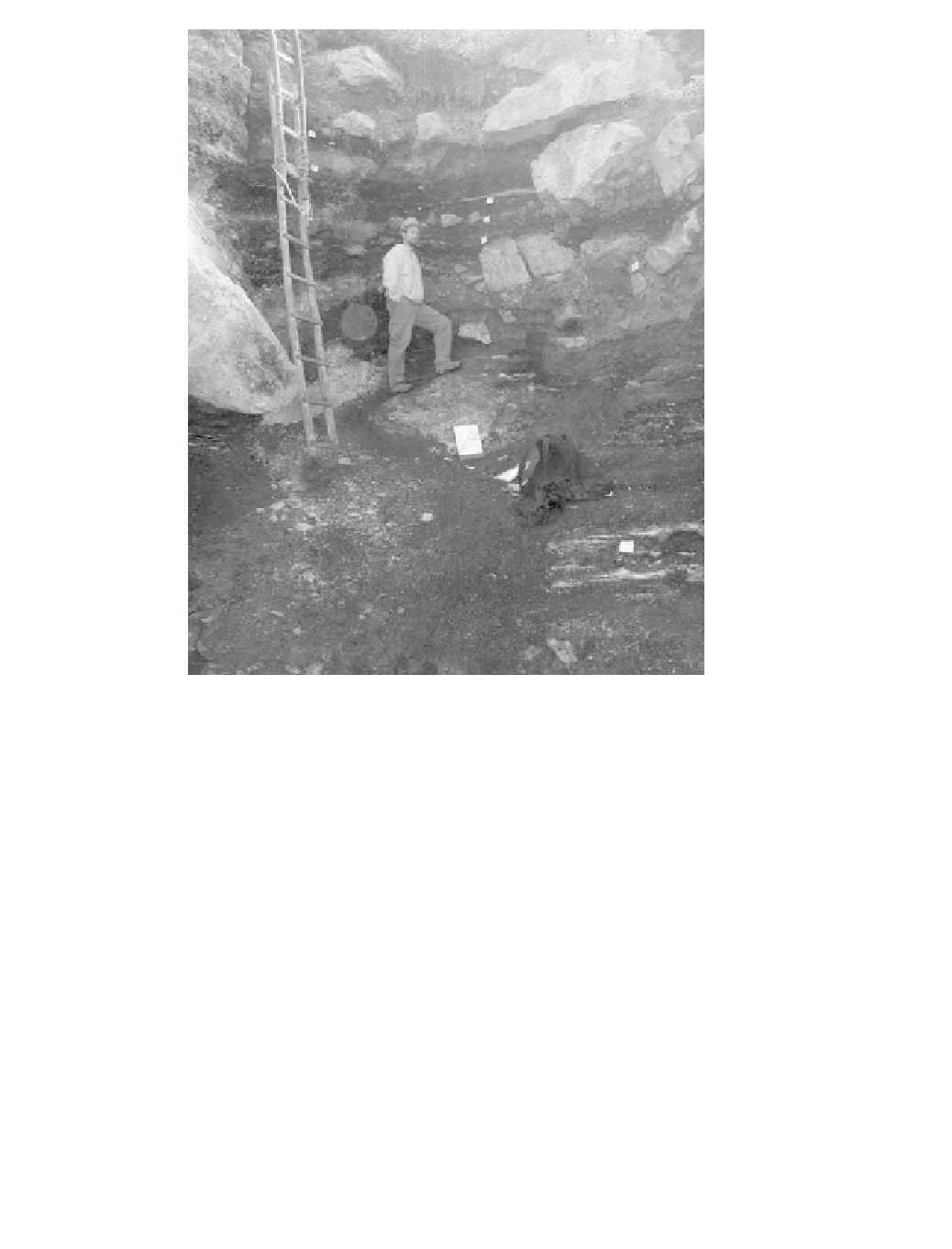Geoscience Reference
In-Depth Information
Figure 13.9
A section in a rockshelter sediment record showing the wide range of
particle sizes (from large boulders to fi ne clays) and complex stratigraphies that can
be encountered. This photograph shows the deep trench at Crvena Stijena in western
Montenegro. This is a large limestone rockshelter that contains over 20 m of Quater-
nary sediments and includes rich Middle Palaeolithic deposits. The photograph con-
trasts very coarse-grained rockshelter sediments in the central and upper part of the
photograph with the lower right section where well-bedded fi ne-grained alternations
of light and dark sediments associated with hearth features are present.
the environmental context of a culture or occupation phase can face many problems,
given that climate during the last cold stage is now known to have fl uctuated
abruptly over timescales of centuries and even decades. Tzedakis et al. (2007) have
proposed a novel method for circumventing this problem. They have directly mapped
the radiocarbon dates of interest from archaeological contexts onto the high-
resolution palaeoclimatic record from the marine sediments of the Cariaco Basin
off Venezuela as the latter has been used to develop a radiocarbon calibration curve
for the last 50,000 years (Hughen et al., 2004). This approach has provided new
perspectives on the environmental context of 'late' surviving Neanderthal groups
from Gorham's Cave in Gibraltar.





